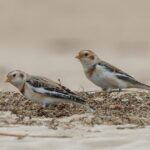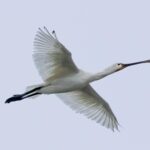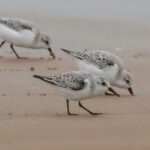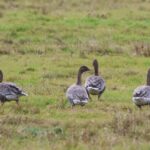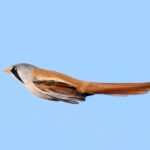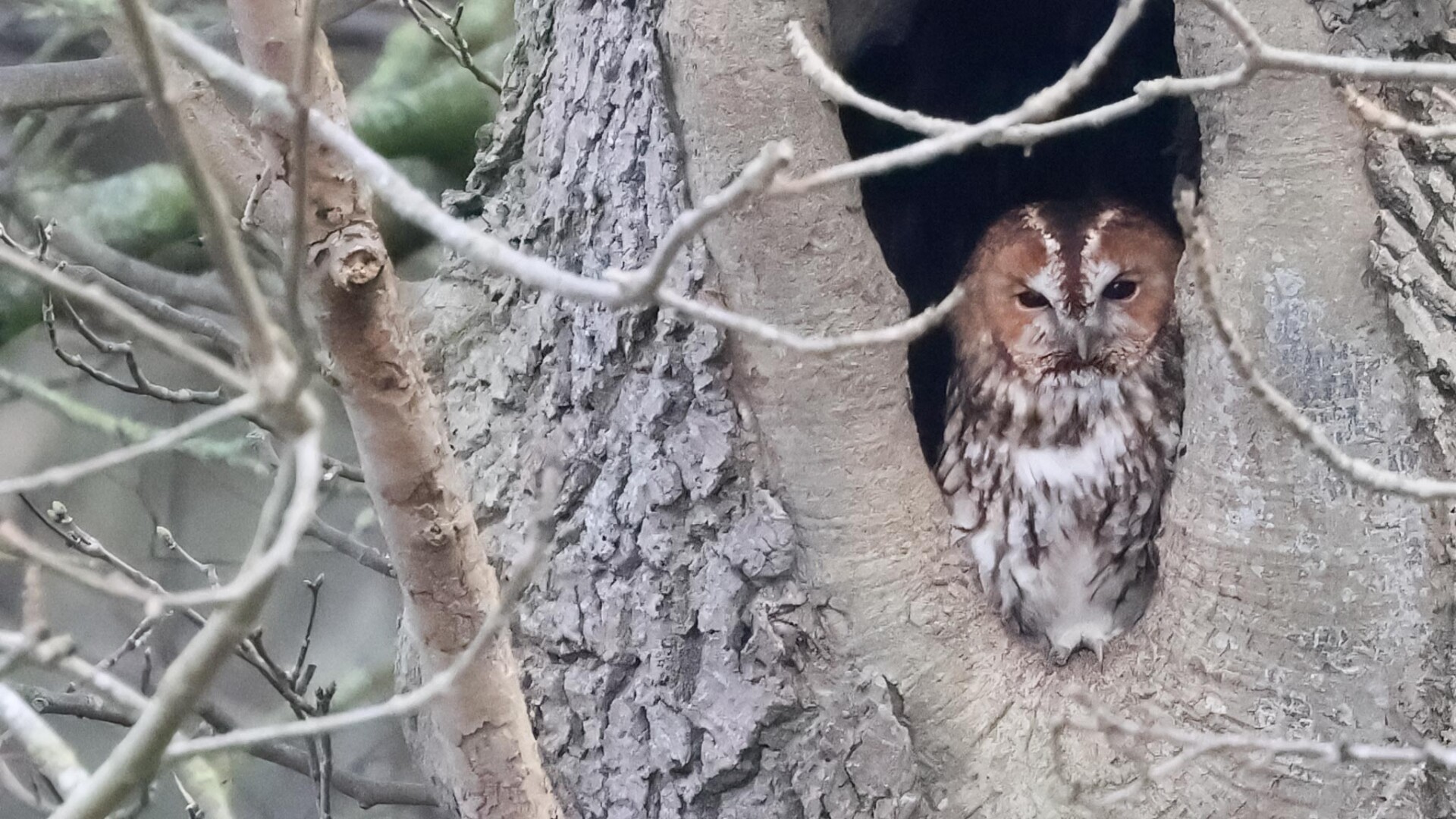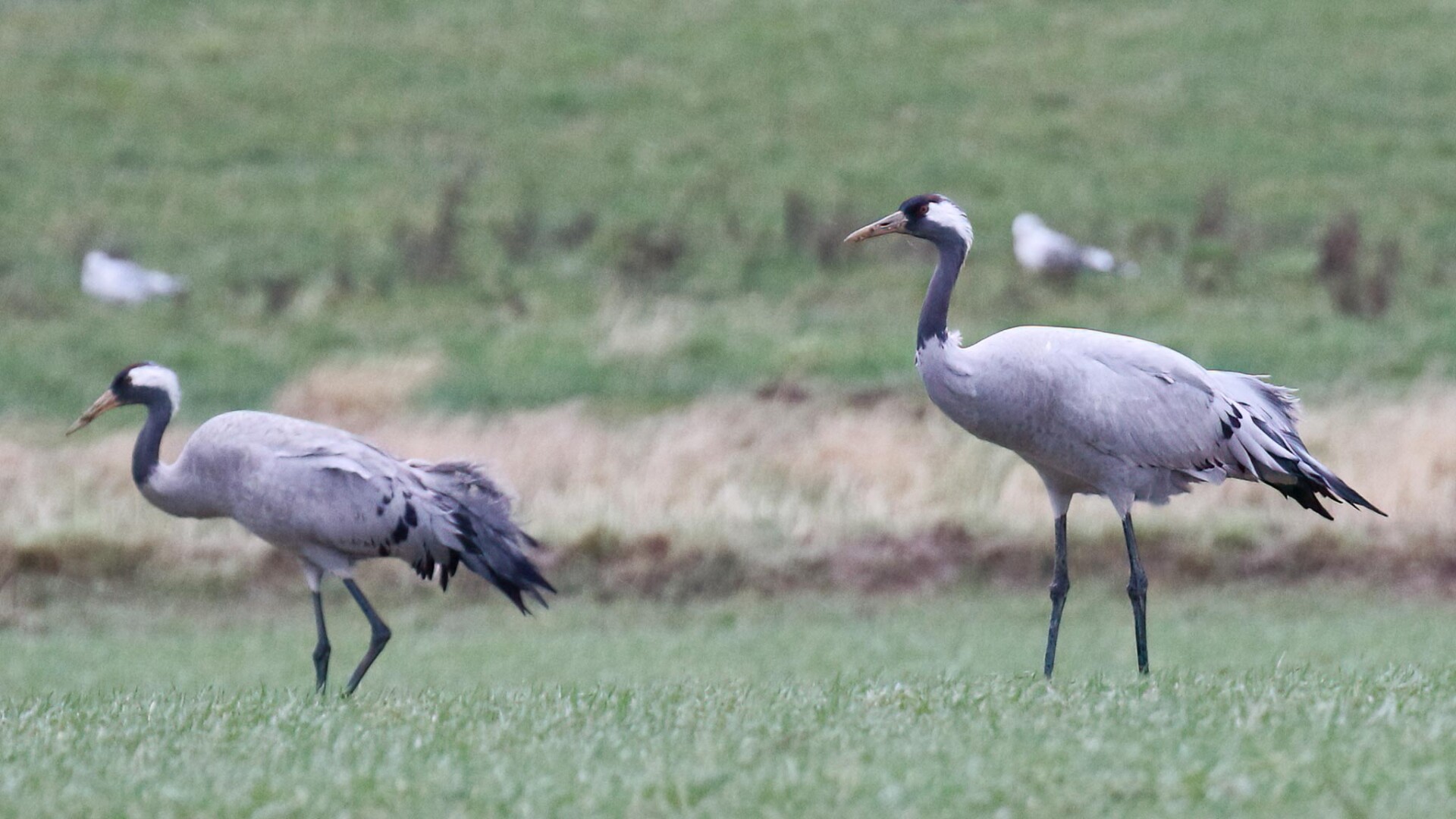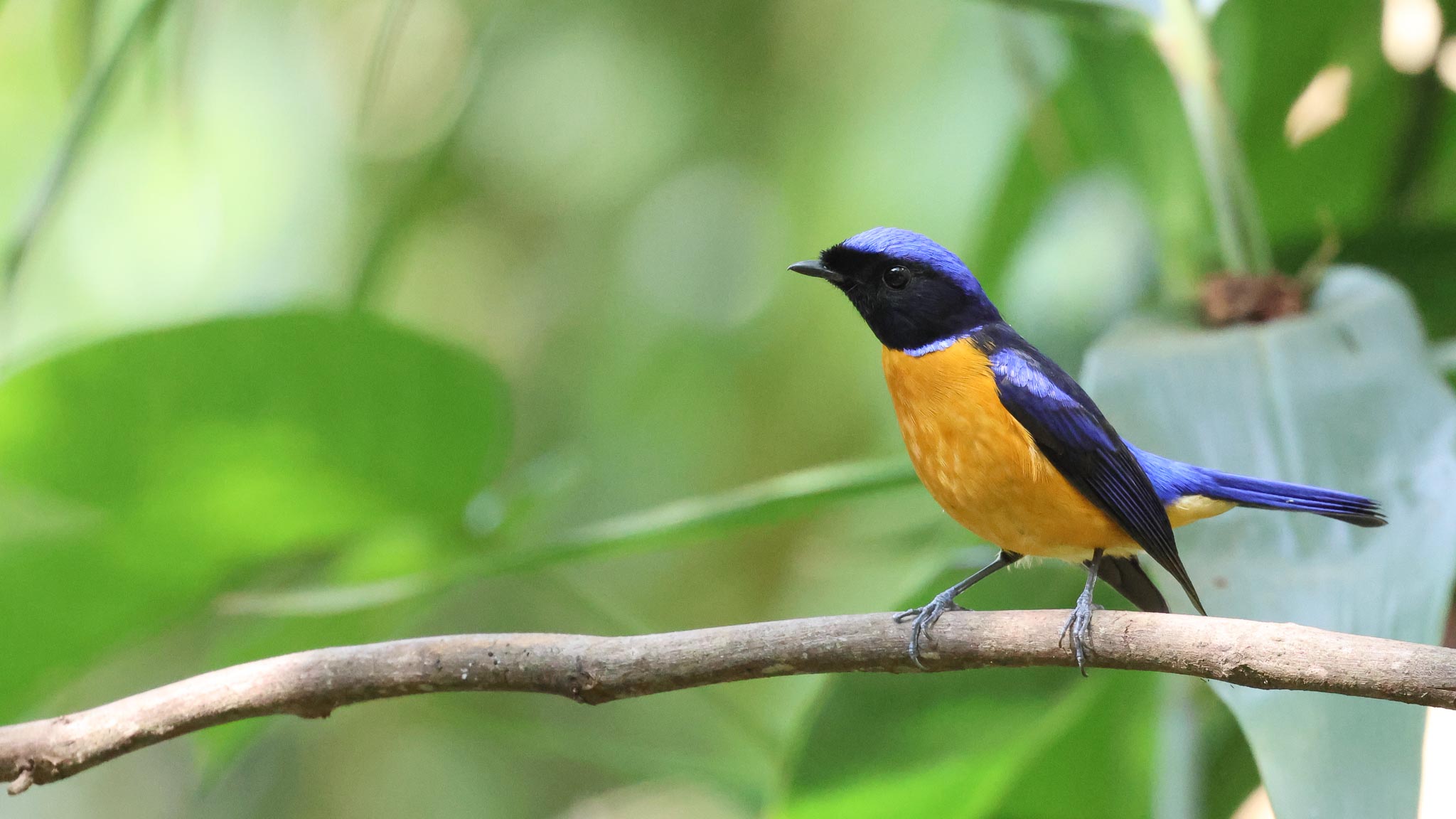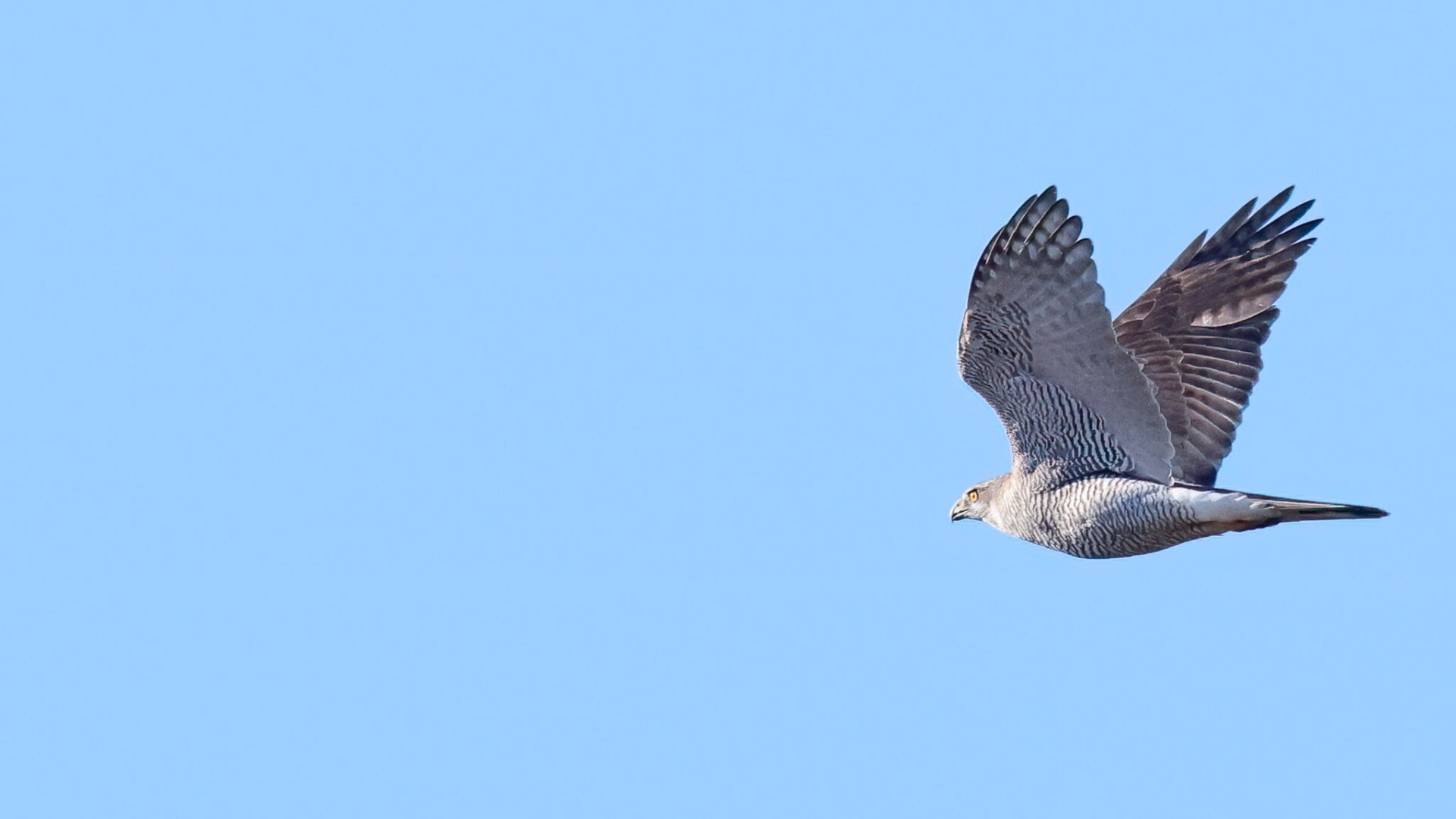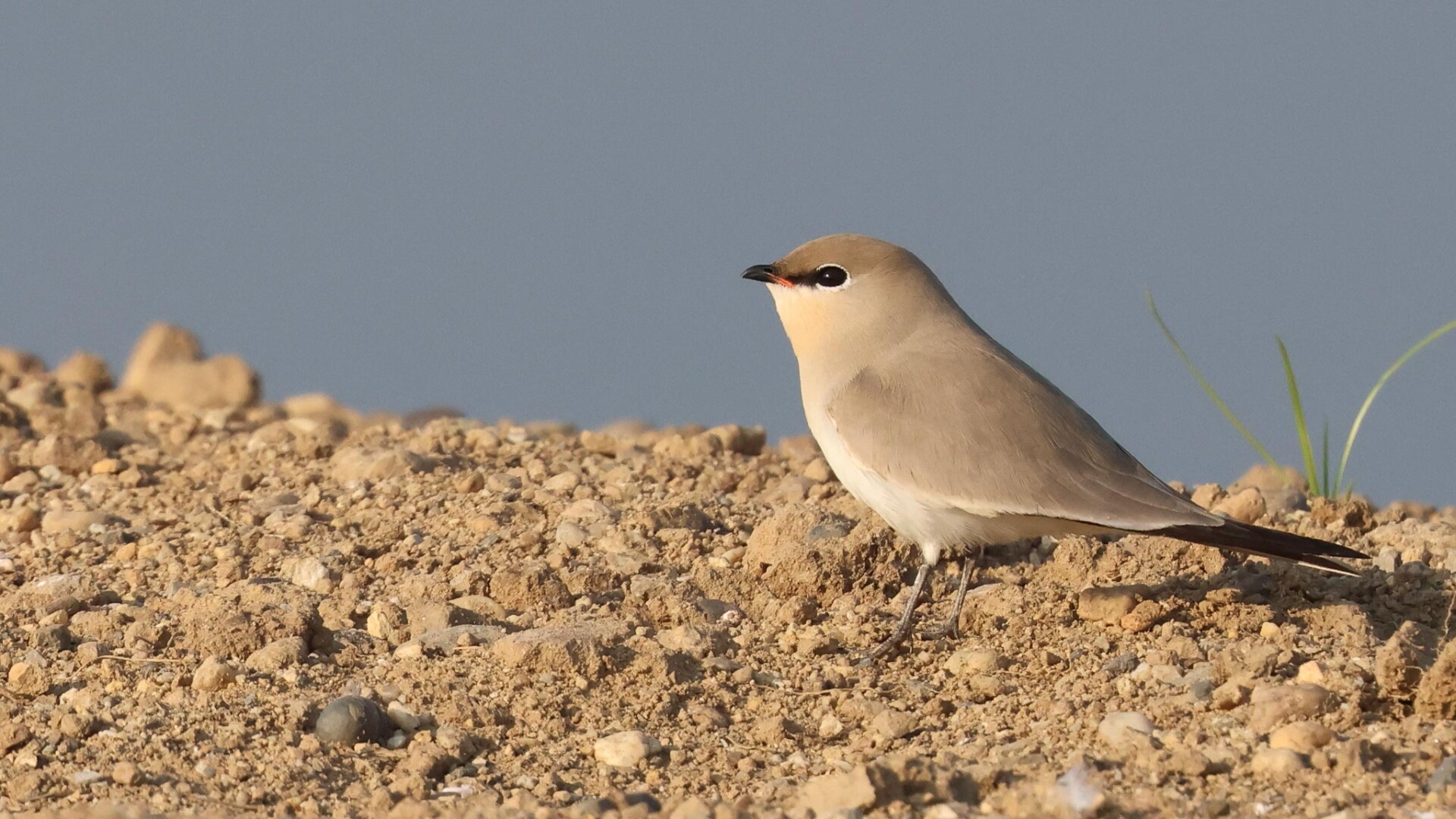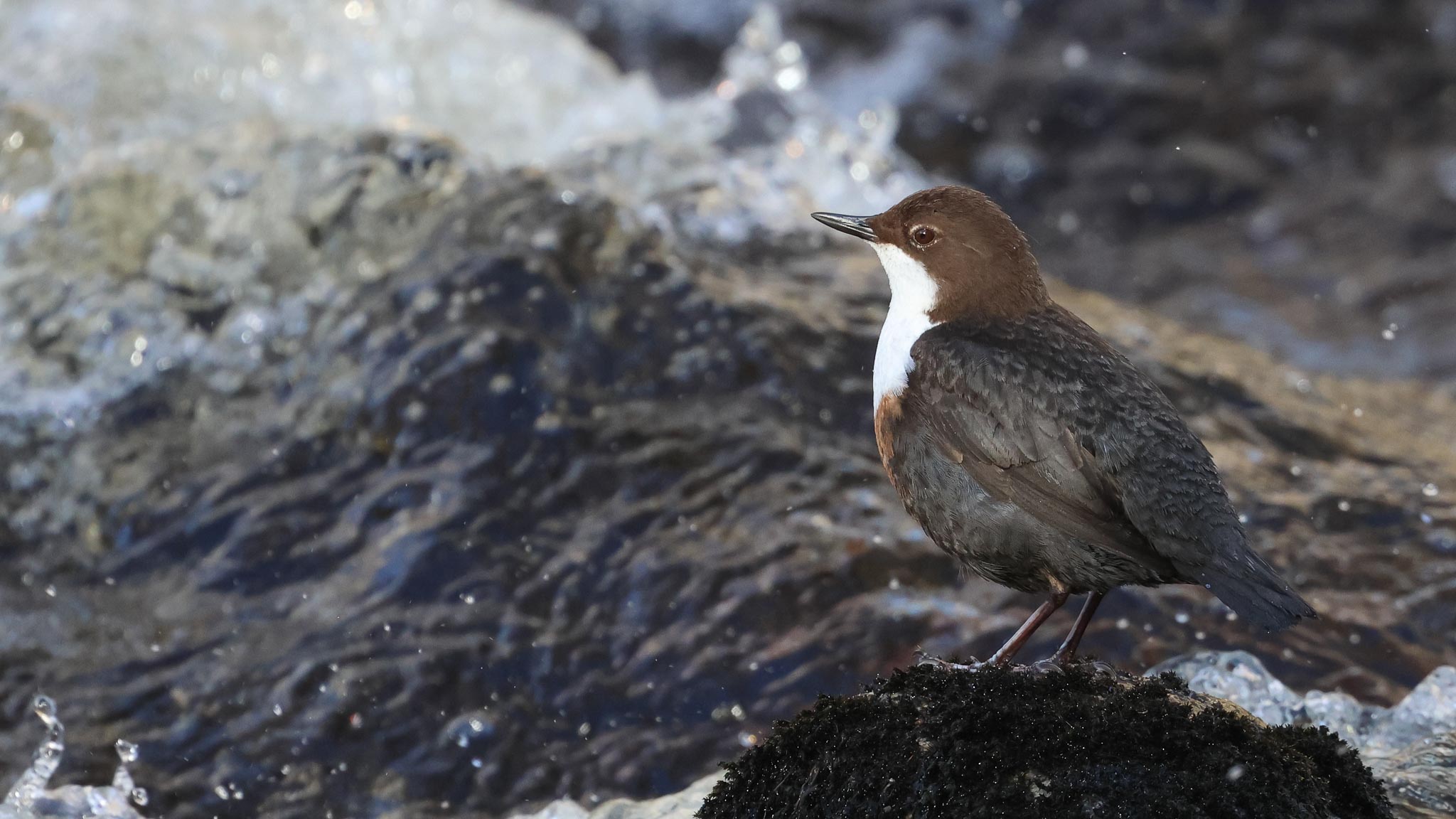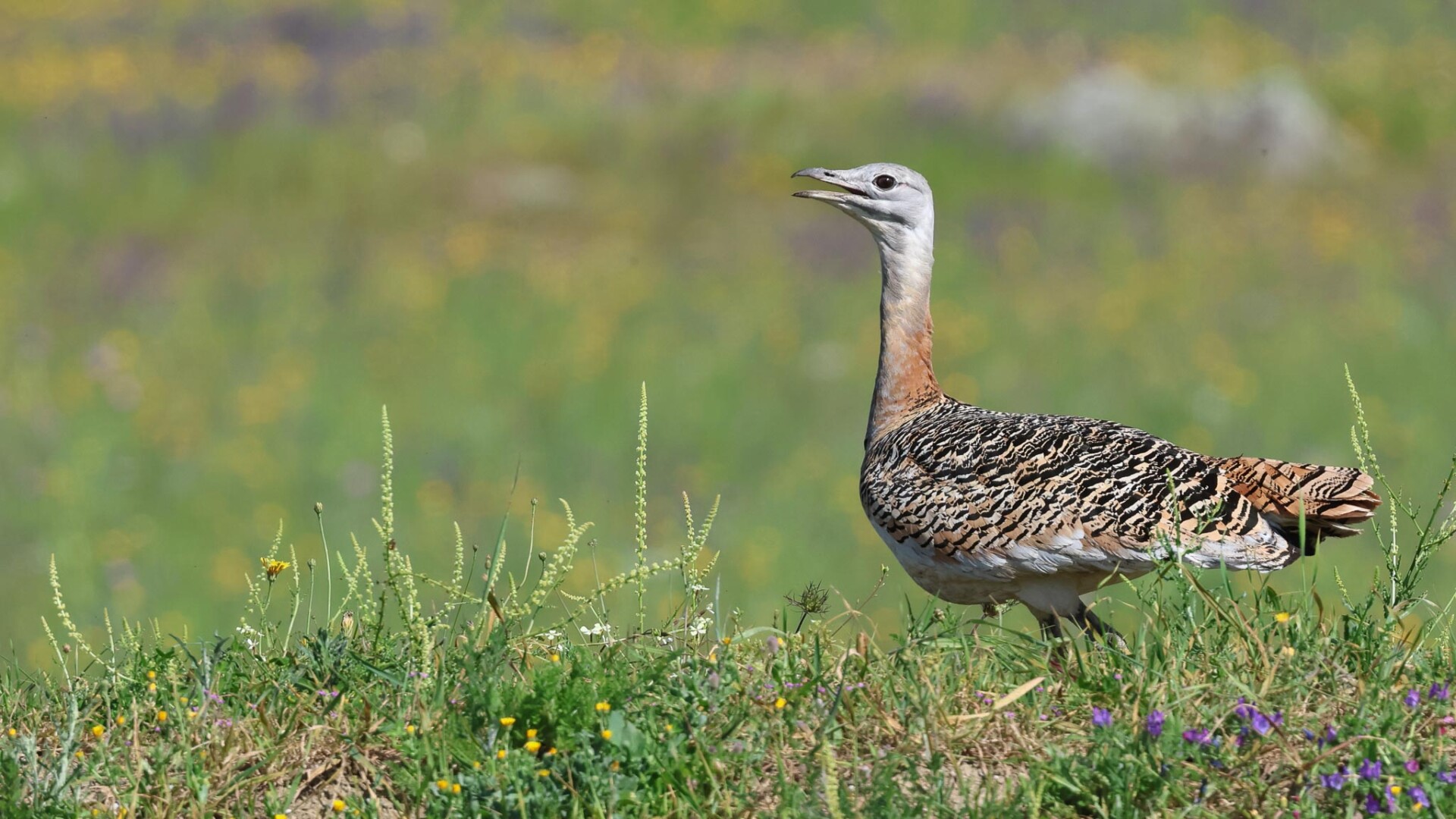Day 2 of a three day Early Winter Tour. With a Met Office ‘yellow warning’ in place for high winds, the original weather forecast for today was looking very rough, but by the day the worst prognostications had been revised and even then the outcome was nowhere near as bad as it could have been. Again!
It was drizzling on and off as we drove east to Cley, but once we arrived and parked at Walsey Hills, it had stopped. A dead Water Vole in the layby looked like it had unfortunately been run over. A quick scan revealed a pair of Gadwall with the Mallard on Snipes Marsh, a Canada Goose on the grazing marsh opposite and a pair of Mute Swans in the channel, all new birds for the trip list.
While it was dry, we decided to walk up East Bank first. There was not much on Don’s Pool, just a couple of Shelduck, and a Marsh Harrier was quartering the reedbed beyond. We could see dark clouds away to the west, and a rainbow over the hides.
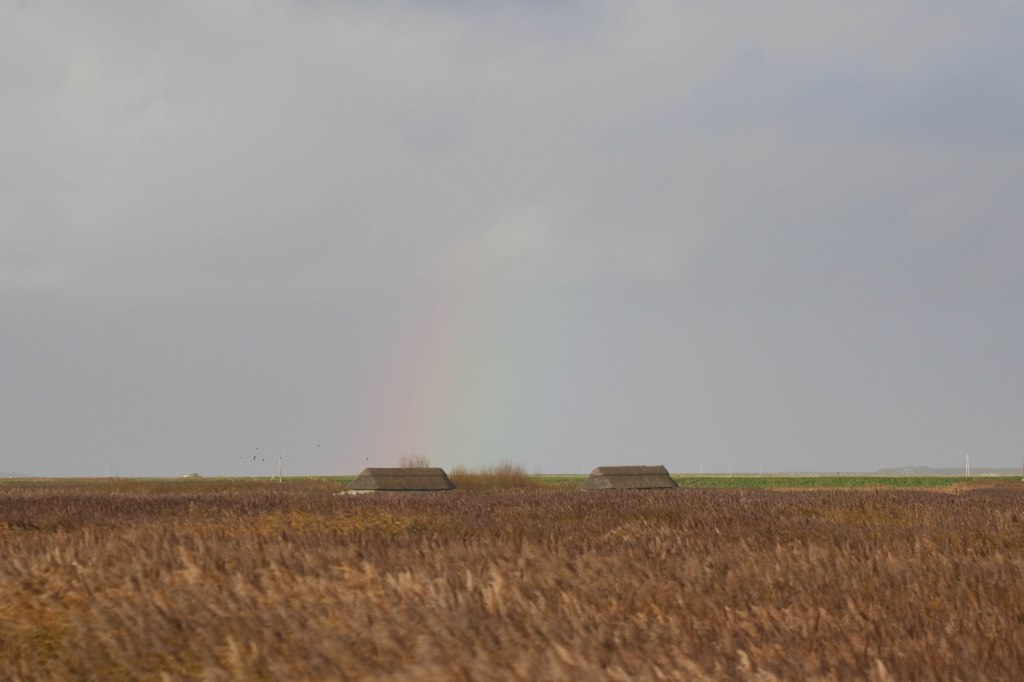
We stopped to scan Pope’s Pool there were lots of ducks and a few Cormorants on the islands. We could make out several Dunlin with a couple of Redshank along the near edge. There were more ducks on the Serpentine, mainly Wigeon and Teal. Another flock of Dunlin flew in and dropped down on the mud.
We could see another rainbow ahead of us now, and more dark clouds coming in off the sea straight towards us. So we hurried on to the shelter overlooking Arnold’s Marsh.
Out of the squally wintry shower, we could scan the pool at our leisure. There were a few more waders on here, more Redshank and a couple of Curlews. Lots of Dunlin were trying to find shelter behind the vegetation on the shingle islands, along with a single Grey Plover and one Turnstone. Four more Turnstone dropped in, as did a couple of Ringed Plovers.
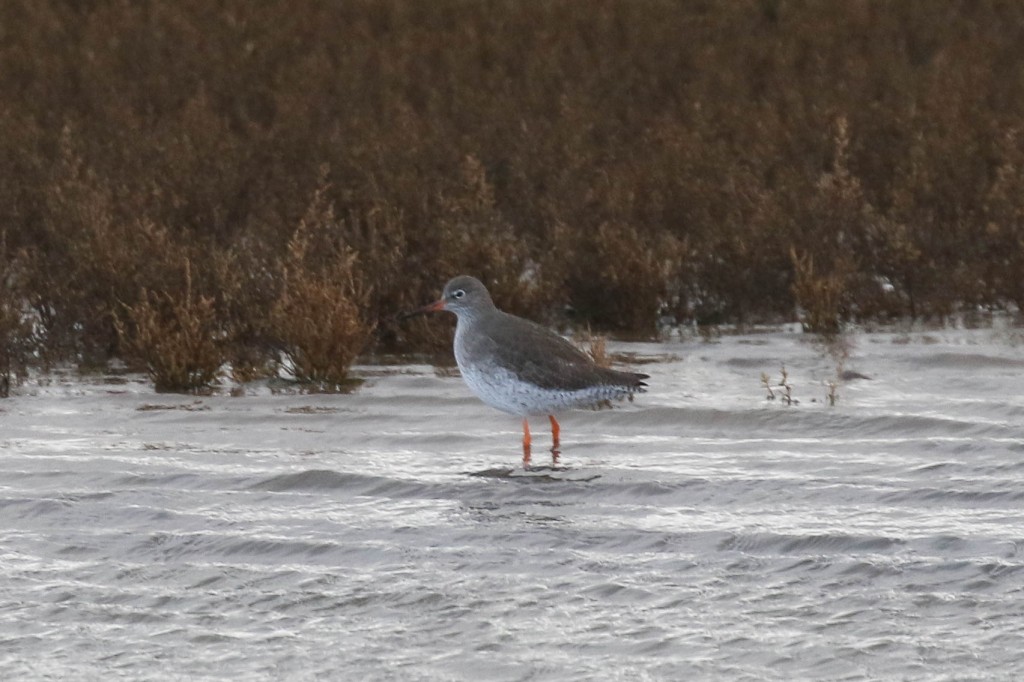
There were more Cormorants on here too, presumably taking a break from the raging sea beyond, and a few Great Black-backed Gulls. We talked about the identification of large gulls and took a closer look as we waited for the squall to pass.
Scanning the brackish pool behind, ten Little Grebes were swimming together and diving out on the water. There was a good selection of ducks – lots of Shoveler, and more Gadwall, but we couldn’t see any sign the Pintail on here today.
A dog walker had passed us on our way out, carrying a pair of binoculars, and we could now see him watching the Snow Buntings out on the shingle ridge, the birds occasionally flying up and whirling round. As he made his way back, he popped into the shelter to tell us they were there, so when the weather cleared, we headed out to see if we could see them a bit closer.
A Little Egret was huddled behind the reeds on the pool down below the path, but flew off as we approached. We had a quick look at the sea when we got to the shingle, but it looked quite quiet – bird-wise at least it was quiet, the sea was predictably very rough. A Gannet flew past just offshore. We turned east and dropped down out of the wind into the lee of shingle ridge.
The Snow Buntings were very mobile at first. They were in a large flock, about 60 of them, and we could see them whirl round as we walked out and then land on the beach side of the ridge. We looked over the ridge where we thought they had dropped but spooked them again as we stuck our heads over. They flew and landed on the shingle again a little further along. We approached carefully, but then noticed another dogwalker coming the other way and sure enough they flew off again as he approached. This time they went much further, landing some way out in the fenced off area north of Sea Pool.
We walked over to the far side of their favourite feeding area, to position ourselves for when they flew back in. As one of the group walked up, he almost trod on one Snow Bunting which hadn’t flown off with the others. It didn’t seem in the least worried and continued feeding just a couple of metres from us, totally unfazed. Amazing views!
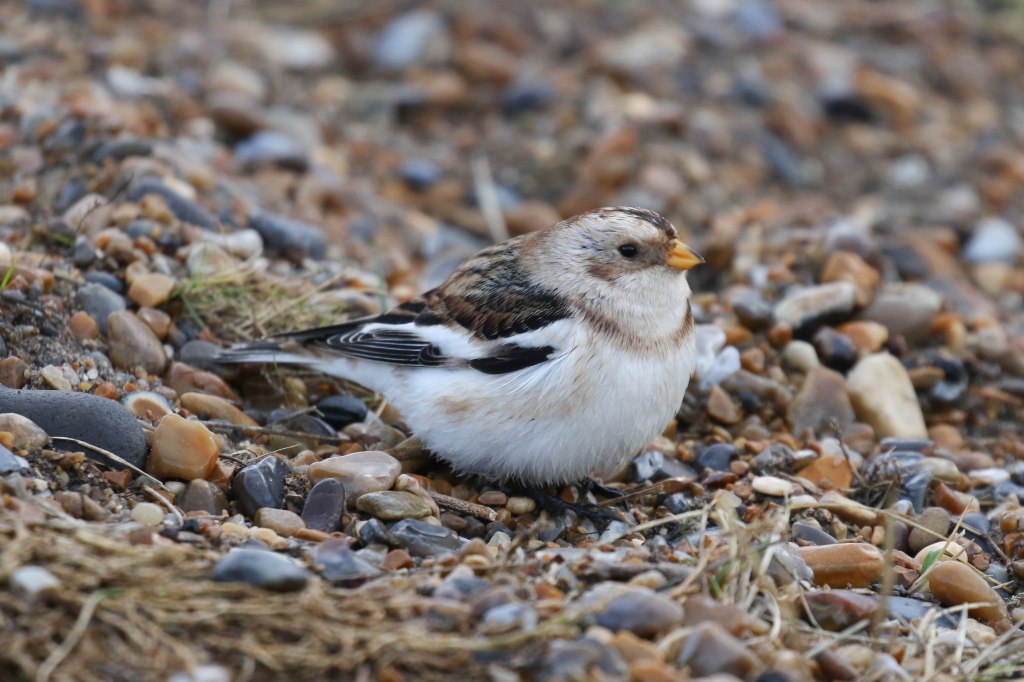
While we were admiring the lone Snow Bunting, the rest of the flock flew back in and landed very close to us too. The single bird then picked its way round past us to join them, and we watched the whole group feeding now at close range. It was interesting to see the mixture of dark and paler birds – as well as variation due to age and sex, there are two races of Snow Bunting which mix together in winter here on the coast, paler Scandinavian nivalis and darker Icelandic insulae.
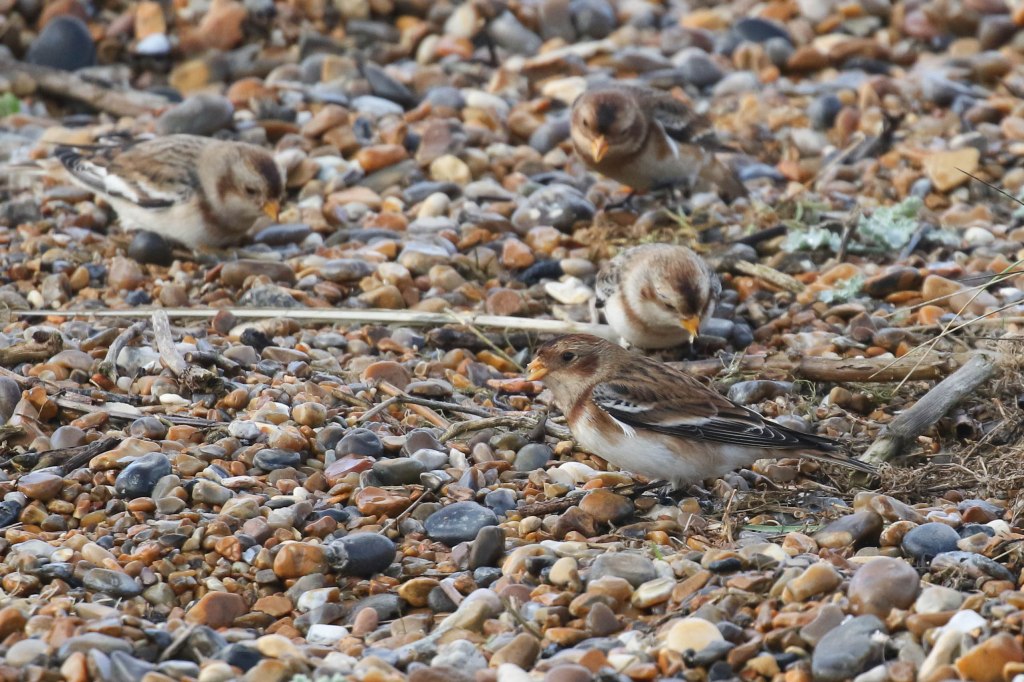
We kept one eye on the sea, but there didn’t appear to be much moving offshore, a steady passage of gulls, and a few divers past. We could see very dark grey clouds and rain away to the east – we had been lucky with the window of weather out here watching the Snow Buntings, but we knew it wouldn’t last so decided to head back before weather turned again.
As we made our way back along the East Bank, there were some Black-tailed Godwits now on the Serpentine, and lots more Dunlin feeding on the muddy edges. A small flock of Linnets dropped in too. As we approached Don’s Pool, a Kingfisher shot past high over the grazing marshes and across the bank back towards the road. We thought it dropped down into the main catchwater drain, but there was no sign of it there when we got back. A Kestrel was hovering over the front of Walsey Hills.
Back to Walsey Hills, we continued on past Snipe’s Marsh and down footpath into bushes, out of the wind. There was a nice selection of tits and finches coming and going from the feeders, but the rest of the bushes were quiet. The willows at the back were still catching the wind. Out at the back, we scanned the fields beyond. A mixed flock of Lapwings and Golden Plover were feeding on the winter wheat. On the hillside behind North Foreland Woods, a Woodpigeon and a Stock Dove were both on the wires, the latter noticeably smaller. A Great Spotted Woodpecker flew over.
Back to the minibus, we drove round to the Visitors Centre at Cley for a coffee break and a chance to warm up. Afterwards, we still had some time before lunch, so we drove back east and on towards Salthouse. We had seen some Brent Geese in the distance from the shelter out at Arnold’s Marsh earlier. They were still in the field next to the road, but we couldn’t see them well from this angle and another car was already in the layby further up.
We drove on further. There was no sign of any Pinkfeet on the marshes at Salthouse today, they were probably feeding inland, so we went to see if there were any gulls loafing in the fields by Beach Road. There were, but unfortunately there were no white-winged gulls with them. We did pick out a rather dark grey-backed adult Herring Gull, a bird of the northern argentatus race.
We turned round and went back to look at the Brent Geese from a different angle. They had moved, but we found we could get a better view from the road opposite Babcock Hide now. One bird on the front edge of the flock stood out, noticeably darker-bodied, the Black Brant. We managed to park and got out very carefully, without flushing the flock.
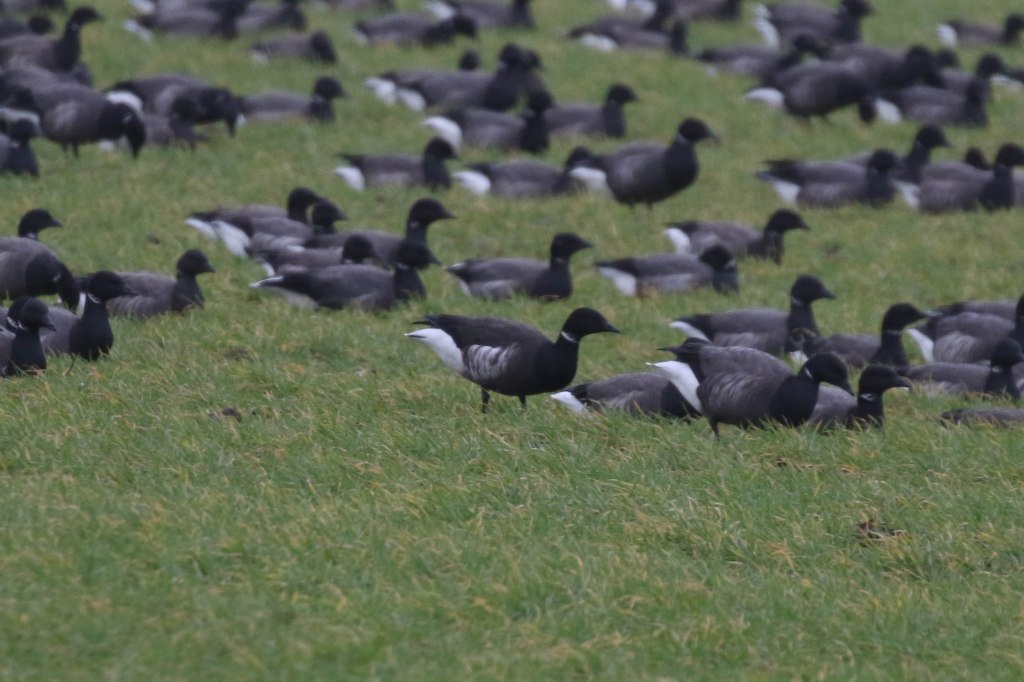
Once the geese settled again, we were able to get the scope on the Black Brant and compare it with the rest of the flock, most of which were the regular Dark-bellied Brents. Scanning through, we found a single Pale-bellied Brent too. A three Brent subspecies flock!
Back to Cley and we drove out to the beach car park now. We stopped for lunch in the lee of the beach shelter. A Grey Seal had hauled itself out on the top of the shingle ridge, and looked back occasionally at the raging surf where several large bulls were lingering in the breakers.
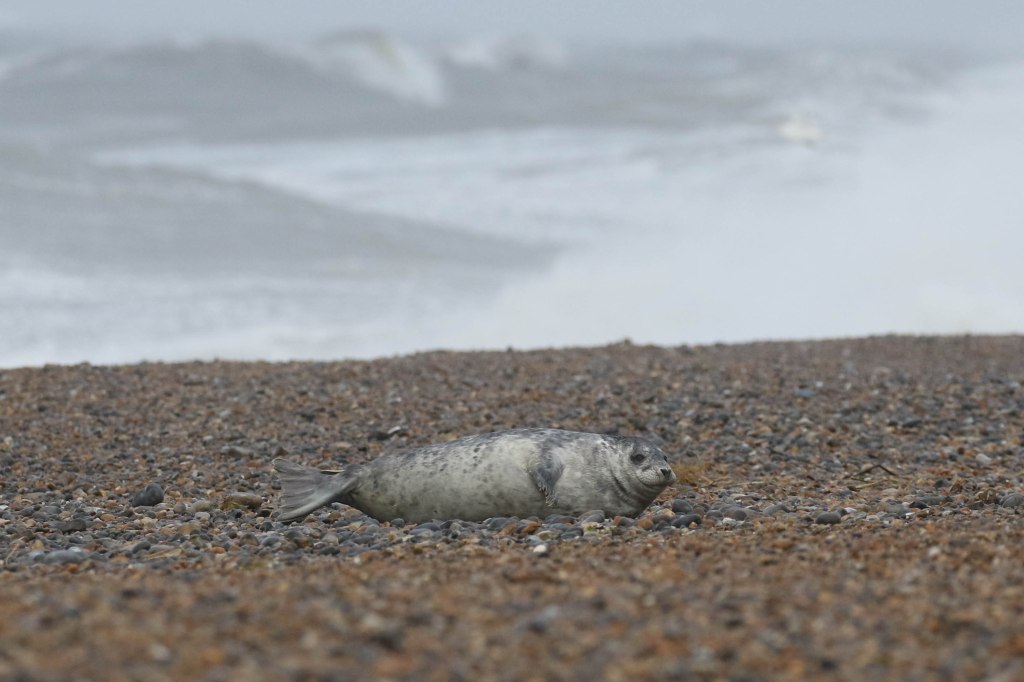
Speaking to the people who had been seawatching here all day, there had been a couple of Glaucous Gulls patrolling up and down the shore earlier, so we kept one eye open while we were eating. After lunch, we found some space in the east side of the shelter, out of the wind, and scanned more thoroughly.
One of the group picked up a distant skua offshore, just as a heavy squall came in over the sea, and a quick view through the scope before it was engulfed by the rain confirmed it was a juvenile Pomarine Skua. That was hard to get onto, but a group of three Great Skuas was much more obliging, as they came through west really close inshore, a great view.
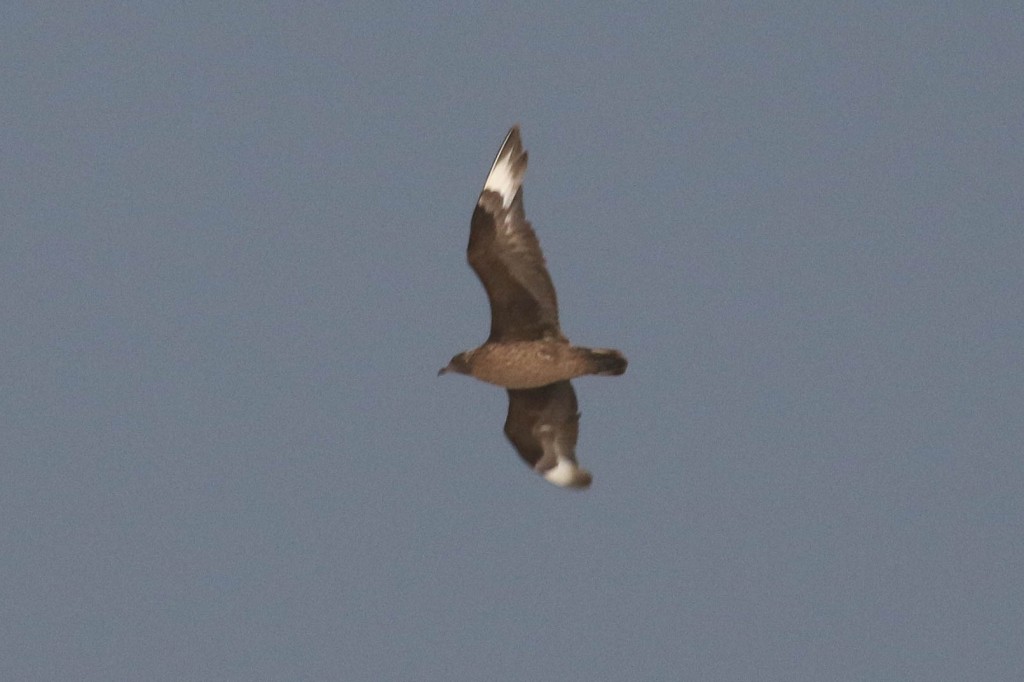
There were several Red-throated Divers and Guillemots moving, and a steady passage of ducks passing. A female Eider flew in and landed on the sea just offshore. There were several flocks of Common Scoter, one group being led by a single drake Goosander. Also quite a few Wigeon, and a female Pintail at the head of one group of those.
There was a steady trickle of waders past too – mostly Dunlin, but also a group of four Knot, several Grey Plovers, and a Ringed Plover. About thirty Snow Buntings flew west along the beach, possibly some of the birds we had been watching at close quarters earlier.
There were lots of gulls just offshore, but no sign of either Glaucous Gull at first. Quite a few Kittiwakes were moving, some nice and close, a mixture of adults and juveniles. A distant Little Gull was quickly lost in the troughs, but then a shout from someone in the car park alerted us to two juveniles coming in behind us which flew right past.
Eventually one of the Glaucous Gulls put in an appearance, coming in along the beach behind the pill box. A biscuit coloured juvenile, it immediately stood out with its very pale wingtips. It arced up into the air several times, dropping back down to the breakers again, and we thought it might carry on straight past us, but disappeared back east.
It was a really productive seawatch for an hour or so, but the light was already just starting to go when some much darker, thicker clouds started to roll in. The skies looked quite apocaplyptic away towards Salthouse and as the bad weather approached us too, we decided to get into the minibus to warm up, and start to make our way slowly back.
We called in briefly at Morston, but there was still too much water in the channel for there to be much feeding here, the tide held up by the wind today. All we could see from the warmth of the bus were a couple of Redshank and Curlew, a single Black-tailed Godwit and a Little Egret.
We thought we might try to catch some geese to end the day at Holkham, but the light had gone by the time got there, and the driving rain was sweeping across the marshes on the 50mph wind gusts. We had done very well all things considered. It was time to call it a day and try again tomorrow.
